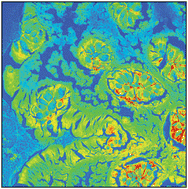Raman and CARSmicrospectroscopy of cells and tissues†
Abstract

- This article is part of the themed collection: Optical Diagnosis
* Corresponding authors
a
Institute of Photonic Technology, Albert-Einstein-Str. 9, 07745 Jena, Germany
E-mail:
juergen.popp@ipht-jena.de
Fax: +49 3641 206399
Tel: +49 3641 206300
b Institute of Physical Chemistry, University Jena, Helmholtzweg 4, 07743 Jena, Germany

 Please wait while we load your content...
Something went wrong. Try again?
Please wait while we load your content...
Something went wrong. Try again?
C. Krafft, B. Dietzek and J. Popp, Analyst, 2009, 134, 1046 DOI: 10.1039/B822354H
To request permission to reproduce material from this article, please go to the Copyright Clearance Center request page.
If you are an author contributing to an RSC publication, you do not need to request permission provided correct acknowledgement is given.
If you are the author of this article, you do not need to request permission to reproduce figures and diagrams provided correct acknowledgement is given. If you want to reproduce the whole article in a third-party publication (excluding your thesis/dissertation for which permission is not required) please go to the Copyright Clearance Center request page.
Read more about how to correctly acknowledge RSC content.
 Fetching data from CrossRef.
Fetching data from CrossRef.
This may take some time to load.
Loading related content
